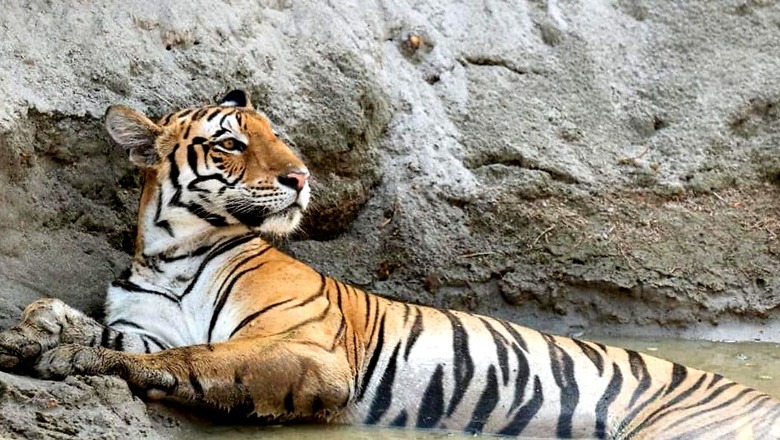
views
Man-animal conflict is increasingly becoming a common problem due to large-scale depletion of forest cover across India. The Uttar Pradesh government, as part of one of its most ambitious projects, will be erecting solar fencing along the state’s forest area to minimise contact between wild animals and human settlements.
Initially, the state government has released Rs 40 crore to fence a 146-km stretch in areas prone to cases of man-animal conflict. The remaining forest area will be fenced in the later phases of the project.
The move came after the chief minister’s visit to Pilibhit, where he announced that solar fencing will be installed along forest areas. “We are intensifying the solar fencing work on the peripheries of tiger reserves to avoid cases of man-animal conflict,” said CM Yogi Adityanath.
Forest department officials, who are aware of the development, said erecting solar fencing along forest areas will not only save human lives but also the lives of wild animals who stray into human territory.
“Carrying out fencing around the forest cover is an ambitious project and I am sure it will minimise man-animal conflict. Initially, we will cover around 146 km, especially in sensitive areas for which the UP government has released around Rs 40 crore,” Sudhir Kumar Sharma, principal chief conservator of forest, told News18.
Sharing the blueprint of the project, forest officials said the fencing will be erected in both Dudhwa and Pilibhit tiger reserve areas. “We have given priority to the areas based on sensitivity. So, we have first picked areas where cases of man-animal conflict are in abundance. Under Dudhwa tiger reserve area, we are erecting a fence in a 15-km area and, under Pilibhit tiger reserve, we are carrying out fencing in a 25-km stretch. Under Katarniaghat wildlife division, around 75 km have been covered while in North Kheri division or buffer zone, a 31-km stretch will be fenced,” Sharma said.
61 kills in 7 years at Katarniaghat forest division
The move has brought relief to people residing close to the forest areas or in the buffer zones. Though the state forest department will take some more months to complete the fencing project, village residents said they are at ease and may not have to carry weapons like knives or sickles when going out to work in the fields.
Officials said the effort is to bring down the cases of man-animal conflict, which are quite high in UP. Going by official records, Katarniaghat forest division has the largest number of cases of man-animal conflict in which humans were the victims.
In the last seven years, 61 people have been killed and 248 injured in these cases. In 2017, at least 11 people were killed and 22 injured; in 2018, seven people died and 25 were injured; in 2019, eight people died and 23 were injured; in 2020, seven people lost their lives and 70 were injured; in 2021, nine people were killed and 51 injured; in 2022, 17 people died and 58 were injured; and, in 2023, two people have died and 19 injured so far.
After Katarniaghat division comes the North Kheri division or buffer zone, in which 44 people have been killed and 86 injured in animal attacks between 2018 and 2023. This is followed by the area under Pilibhit tiger reserve, in which 21 deaths have been reported with more than 15 people injured in cases of man-animal conflict.
Actual figures of human deaths much higher?
Local residents, however, claimed that actual figures of human deaths in cases of man-animal conflict are much higher. “There are many people missing from villages and a number of cases go unreported. The real numbers are much higher than official figures. But, this has been a long-pending demand for us…” said Rampal Yadav, head of Dumera village in the buffer zone of Dudhwa forest in Lakhimpur Kheri. Dumera is one of the villages where man-animal conflict cases are high.
Neelam Devi, also from Dumera village, lost her husband Mahesh Kumar in a tiger attack on May 21, 2022. She appreciated the state government’s move and said: “…I lost my husband but I don’t want this to happen to anyone else. At least now people can live without the fear of wild animal attacks, which are quite common in Dumera.”
“There are a large number of human settlements in forest areas of UP. If we talk about the buffer zone, or the border area, of Dudhwa Tiger Reserve alone, there are more than 36 villages with a population of around 25,000 (approx). Also, there are 13 villages with a population of around 15,000 in the core area,” a senior forest official said.
Relocation of villages failed
Calling fencing as the only solution to the problem, some senior officials said that in 2018, the state forest department had chalked out a plan to relocate villages in the core jungle areas.
“In 2018, a five-year-old tigress was killed by an angry mob in Chaltua village, which is in the core zone of Kishanpur sanctuary of Dudhwa Tiger Reserve. Back then, the chief conservator of forest and field director planned to relocate the human population from the core area in order to minimise cases of man-animal conflict. Due to official reasons, the project was stalled,” a senior official said.
Officials further said the forest department had then offered Rs 15 lakh to people under the voluntary scheme to relocate but village residents refused. They also demanded a plot of land with the promised Rs 15 lakh for relocation. But, the department refused to accept this.




















Comments
0 comment